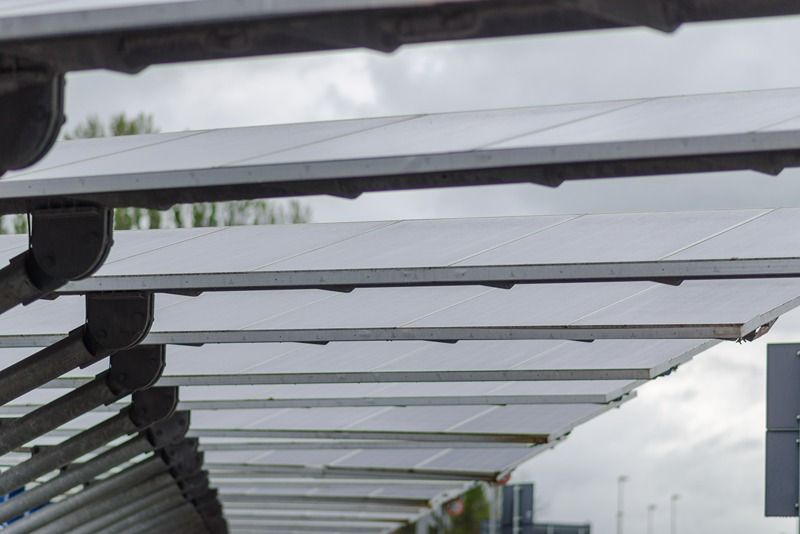Steel support structures are often treated as the background of solar infrastructure which is essential yet overlooked. However, these foundational elements directly influence not only the stability of photovoltaic (PV) installations but also their efficiency, longevity and return on investment. For India, where solar capacity is projected to reach 280 GW by 2030, according to the Ministry of New and Renewable Energy, structural efficiency is no longer a technical detail, it is a growth lever.
Structural strength under variable conditions
Steel’s primary contribution lies in its superior strength-to-weight ratio. This is vital for solar modules, which must endure wind loads, seismic events and thermal cycling over a 25-year lifecycle. Galvanised and hot-dip coated steel solutions offer corrosion resistance and are well-suited to India’s diverse climates, be it the monsoon-drenched coastlines of Kerala or the dry heat of Rajasthan. A 2023 study by the National Renewable Energy Laboratory found that well-designed steel structures could reduce system-level energy losses by up to 8% by preventing micro-movements that misalign panels over time.
Precision in tilt and orientation
One of the less discussed but highly significant advantages of steel frames is the level of geometric accuracy they enable in panel placement. A marginal deviation in tilt angle - say, 5° from optimal can result in energy losses of up to 10% annually, as noted by the Solar Energy Society of India. Steel support structures, manufactured with tight tolerances, ensure consistent angles across the array, improving energy capture particularly in fixed-tilt and single-axis tracking systems. Their adaptability allows for fine-tuning installations to suit latitude-specific sun paths.
Durability with minimal upkeep
Galvanised steel frames typically last beyond 25 years with minimal degradation, unlike aluminium or polymer-based alternatives that may warp, crack or corrode in harsh environmental conditions. This resilience directly impacts lifecycle cost. According to a 2022 report by the Indian Institute of Technology, Madras, the cost of structural replacement or retrofitting accounts for nearly 15% of maintenance expenditure in sub-optimally designed PV plants. Steel minimises this burden, preserving structural integrity even as other system components like inverters or batteries undergo refresh cycles.
Scalability without compromise
As MSMEs and utilities alike move towards larger, modular solar installations, the scalability of steel support systems becomes a decisive factor. Steel allows for longer spans and fewer vertical supports, reducing shadowing and land-use inefficiencies. This is particularly relevant for agrivoltaic applications, where crops must coexist with PV arrays. Moreover, off-site fabrication and on-site modular assembly reduce installation timelines, cutting down labour costs and exposure to project delays.
Customisation for terrain and typology
Steel can be fabricated to match installation needs across ground-mount, rooftop, or floating solar formats. Its versatility is especially valuable for retrofitting older rooftops in industrial zones, where loading conditions vary. On sloped or uneven terrain, steel structures can be adapted to maintain panel uniformity without extensive site levelling. As a result, they enable solar expansion even in geographies previously deemed unsuitable due to engineering limitations.
Supporting tracking and automation
Modern solar tracking systems, designed to increase panel efficiency by up to 25%, require sturdy and vibration-resistant mounting platforms. Steel’s rigidity makes it the default choice for motorised, load-bearing components such as tilt actuators and gear tracks. Unlike lighter materials, which may flex or warp under cyclical loading, steel offers the mechanical stability needed for dynamic performance without premature wear.
A sustainable choice in itself
While the focus is often on solar’s environmental credentials, the structural materials used must also meet sustainability goals. Steel is among the most recyclable materials globally, with a recovery rate exceeding 90%, according to the World Steel Association. India’s increasing focus on green buildings and low-carbon infrastructure has driven adoption of steel frames that meet both performance and environmental compliance standards, including GRIHA and LEED.
Conclusion
Maximising solar panel efficiency is not just about improving modules or inverters; it starts from the ground up, literally. Steel support structures offer an optimal combination of mechanical performance, adaptability and lifecycle value. For MSMEs, EPC contractors and industrial developers in India’s fast-expanding renewable energy sector, investing in structurally sound, precision-engineered steel supports can unlock higher efficiency, lower operating costs and long-term resilience. In an energy market defined by margins and scale, that edge is not optional, it is essential.




 +91 7208055523
+91 7208055523
 Help & support
Help & support
